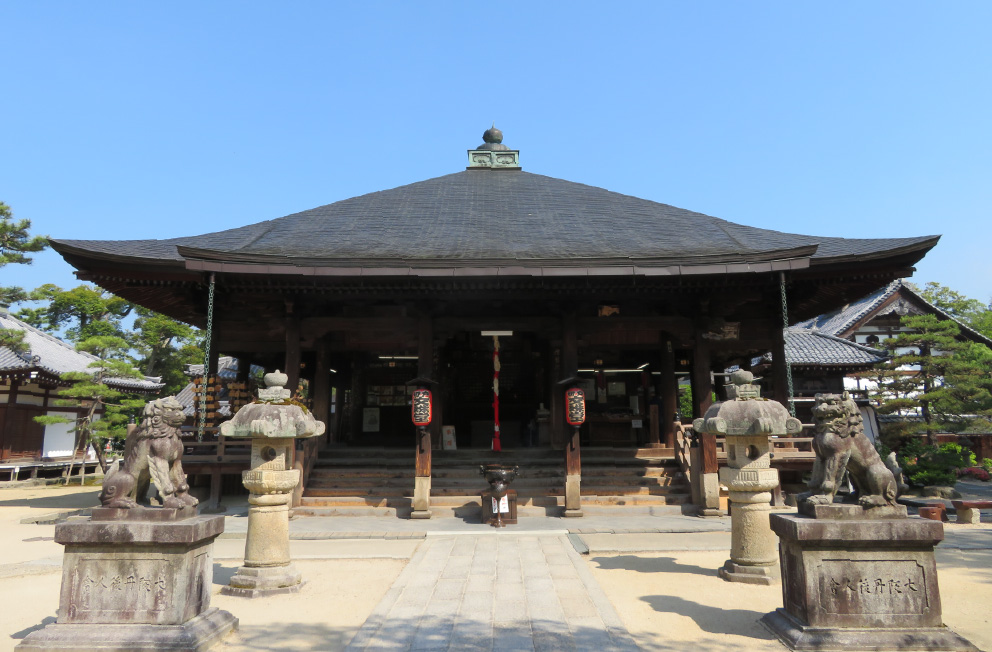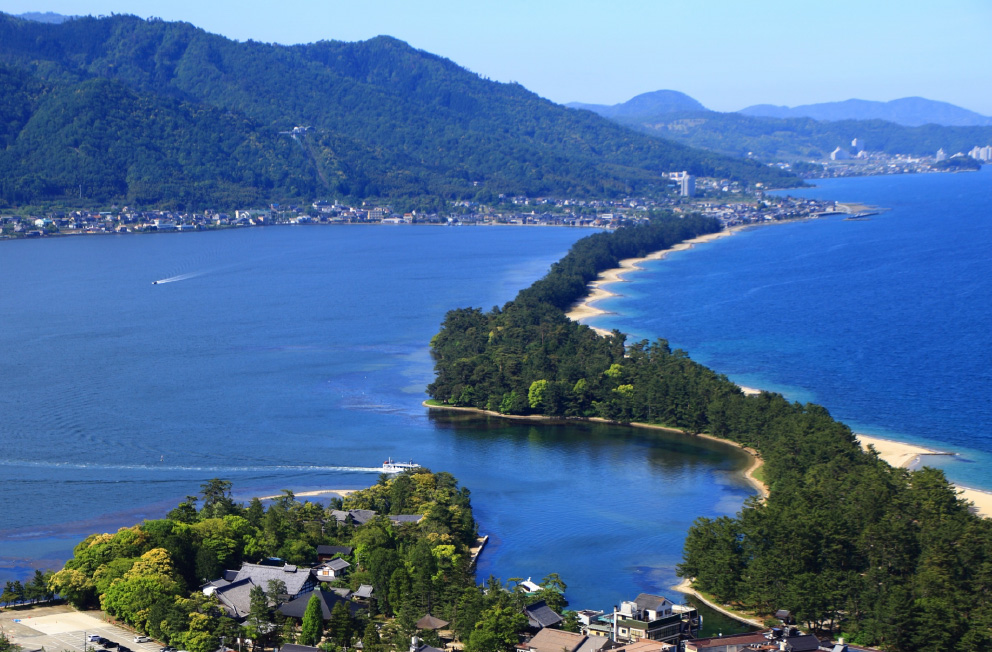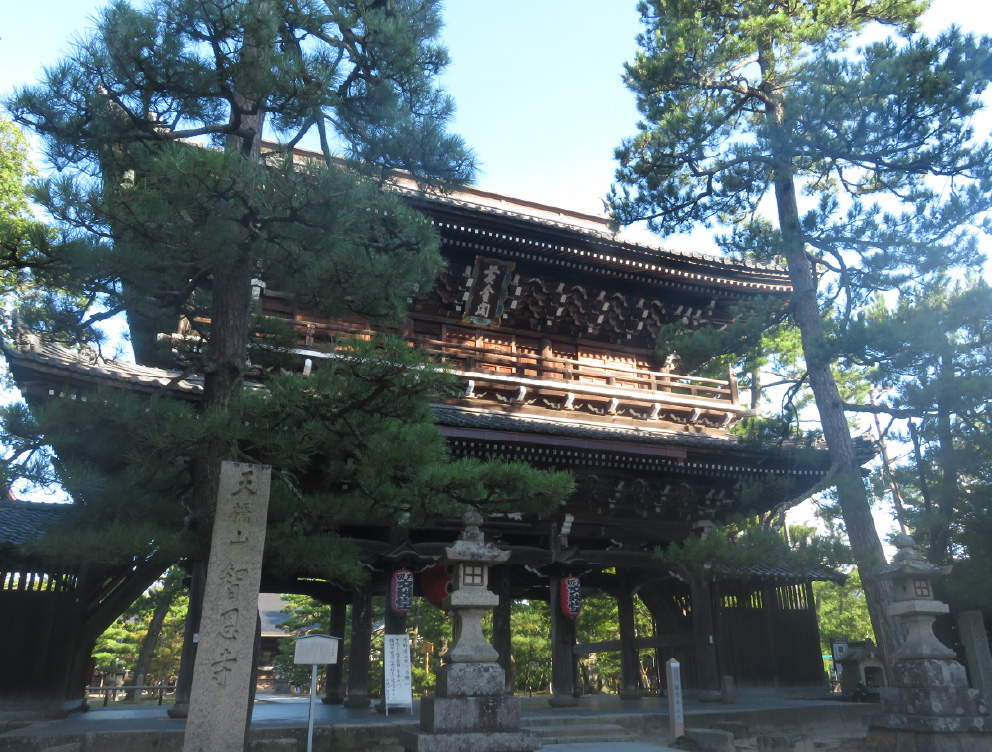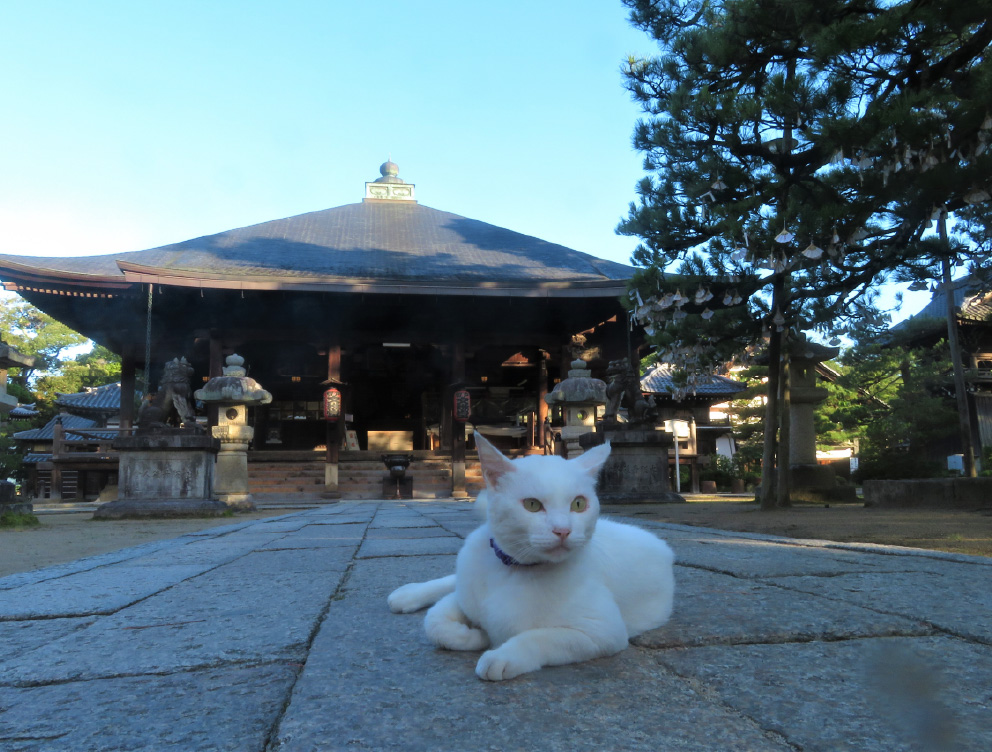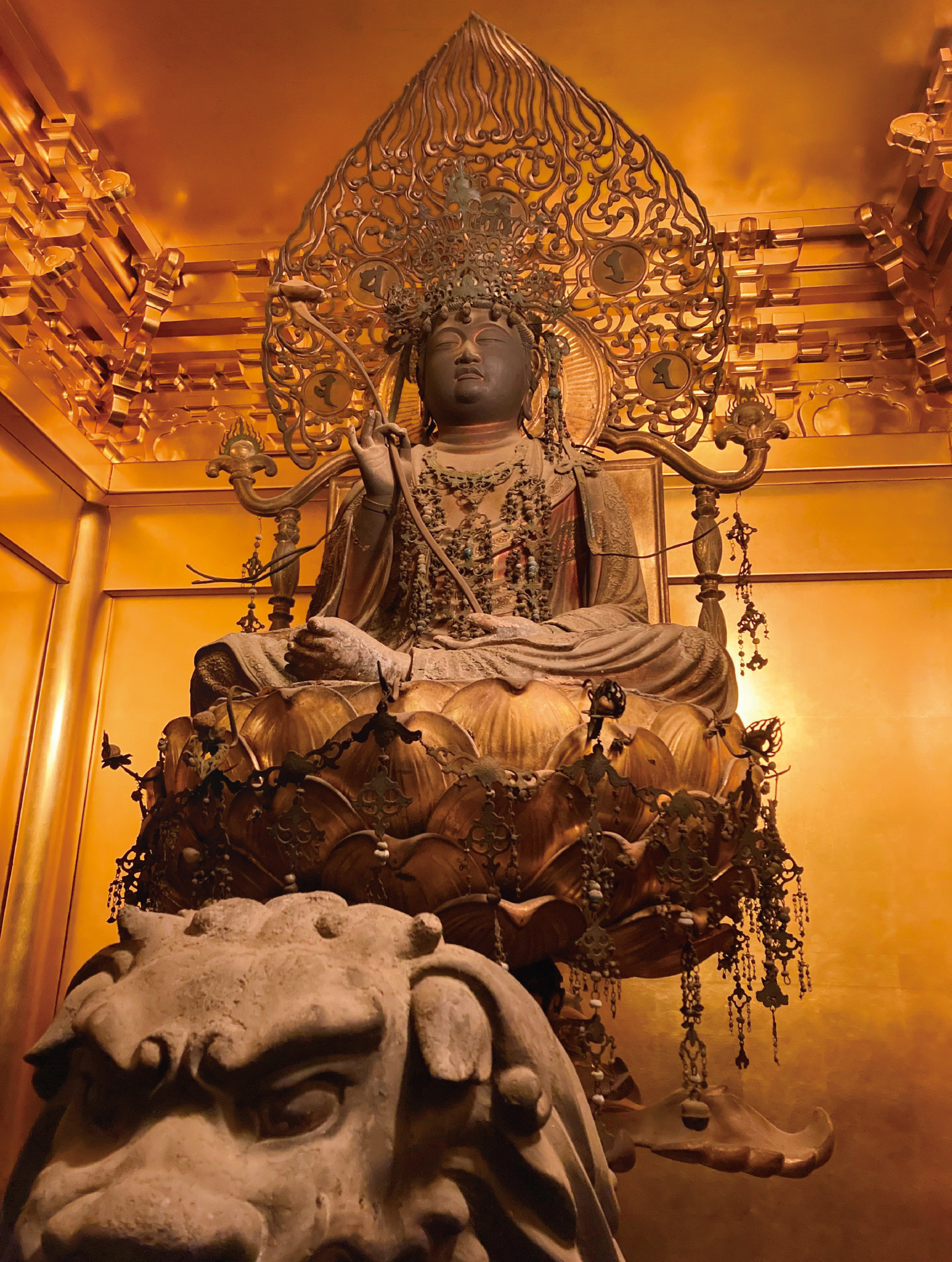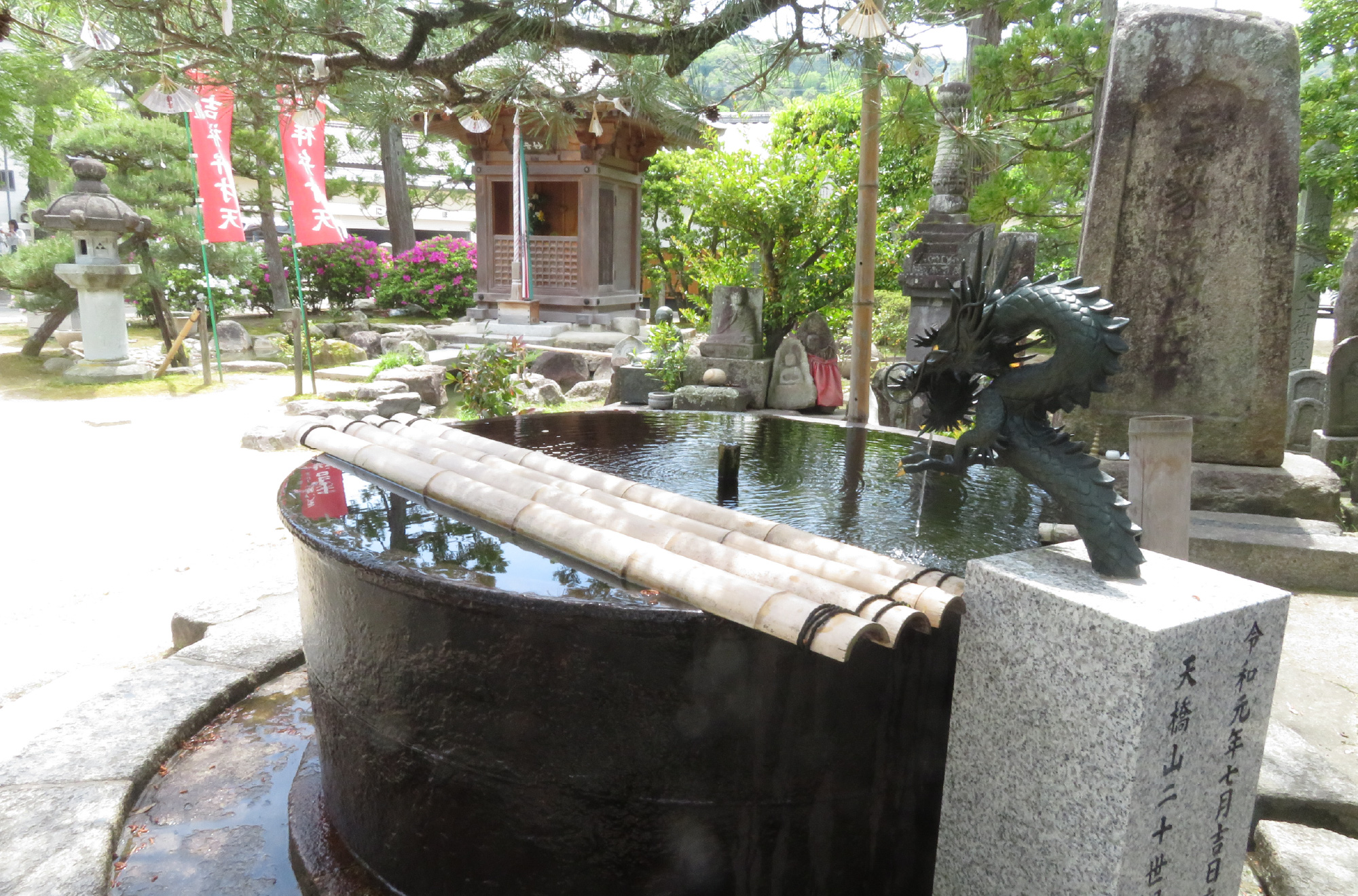Chionji Temple
Chionji is a Zen Buddhist temple located in a scenic spot near Amanohashidate, which is renowned as one of Japan’s three most scenic places. Amanohashidate is a sandbar in the sea covered in pine forest just over 3 kilometers (2 miles) long, which is said to resemble a dragon or bridge connecting to heaven. It has been a famous sightseeing destination since ancient times. Chionji Temple itself is home to many buildings and artifacts that tell the story of its long history, and it attracts many worshippers.
The specific year of the temple's founding is unknown, but its origins are said to date back to the mythological period when the Shinto gods created Japan. It was given the name Tenkyozan Chionji by Emperor Daigo in 904. The principal image of the temple, Manjushri Bodhisattva—Monju Bosatsu in Japanese—is one of the three most famous images of this bodhisattva in Japan, and many believers visit to pray for success with entrance examinations and other academic endeavors.
The temple's annual Debune Matsuri (Boat Launch Festival) on July 24th is held in honor of Manjushri, and the sounds of monks chanting sutras echo through the lit-up grounds at night. In the spring, the flower festival is held in celebration of the Buddha's birthday, and the Monju-do Hall is decorated with beautiful flowers. Visitors are also drawn to the temple by its adorable cats, who roam freely within the grounds.
Important Cultural PropertyWooden Images of the Bodhisattva Manjushri Flanked by Attendant Sudhana and King Udayana
The principal image of worship at Chionji Temple is Manjushri (Monju Bosatsu in Japanese), a symbol of wisdom who is depicted here traveling from India to China. Manjushri sits astride a lion, flanked by his attendant Sudhana (Zenzai Doji in Japanese) on the right and King Udayana on the left. The former carries Manjushri's iconic sutra box, a symbol of wisdom, and the latter leads the lion.
This piece dates back to the Kamakura Period (1185–1333). Its use of fine, raised colored ornamentation, the exceptional height of the tied hair atop the head, and the soft and supple look of the body are characteristic of the latter Kamakura Period artistic style.
Important Cultural PropertyIron Bathtub
Although it is currently used as a water basin, this was intended for use as a bathtub. It was originally made for Kohoji Temple in 1290, during the Kamakura Period (1185–1333), and later moved to Chionji Temple. The maker’s marks indicate that it was made by a blacksmith named Sadakiyo Yamagawa, and the use of a thin layer of iron despite the bathtub's large size speaks to his skill and craftsmanship.
Important Cultural PropertyTwo-Storied Pagoda
A two-story pagoda with a cylindrical upper tier on top of a square first tier, topped with a tented roof and a stupa with a spiral, is called a tahoto. Chionji Temple's tahoto is the only one remaining from the Muromachi period (1336-1573) in the Tango region. The image of Vairocana (Dainichi Nyorai in Japanese) enshrined in the center is the fundamental Buddha in esoteric Shingon Buddhism and considered a symbol of the universe. The roof of the pagoda is made using the ancient technique of layering thin, overlapping wooden boards, and the gently curving eaves create an elegant appearance.
Important Cultural PropertyGong
According to its inscription, this gong was made in 1322 for a Buddhist temple in Korea, and it serves as an example of the trade activities between Japan's Tango region and the Korean Peninsula. The gong is similar in design to waniguchi gongs traditionally seen at Japanese temples, although some differences can be seen, such as the use of three rings for hanging it, and the lotus-petal and arabesque design motifs around the perimeter.
-

No. 1 Kannon-ji Temple
(Fukuchiyama City) -

No. 2 Tenneiji Temple
(Fukuchiyama City) -

No.3 Ankokuji Temple
(Ayabe City) -

No. 4 Komyoji Temple
(Ayabe City) -

No. 5 Shoreki-ji Temple
(Ayabe City) -

No. 6 Matsunoo-dera Temple
(Maizuru City) -

No. 7 Kongoin Temple
(Maizuru City) -

No. 8 Taneji Temple
(Maizuru City) -

No. 9 Chionji Temple
(Amanohashidate) -

No. 10 Enjoji Temple
(Kyotango City)


